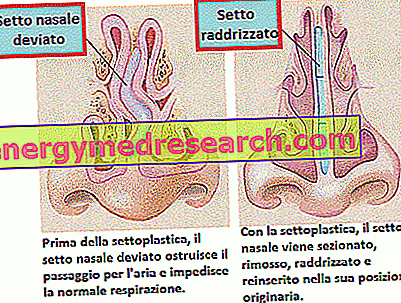The term doping means the use (or abuse) of particular substances or medicines in order to artificially increase the physical performance and performance of the athlete. The use of doping is an infringement of both the ethics of sport and that of medical science.

Doping is not a recent phenomenon, since ancient times recourse has been made to substances and practices to try to improve a sports performance; already in the 668 AC Olympics the use of exciting substances (such as hallucinogenic mushrooms) is reported. Galen (130-200 DC) describes in his writings the substances that Roman athletes took to improve their performance. If in ancient civilizations mushrooms, plants and stimulating drinks were used, with the development of pharmacology and the pharmaceutical industry in the nineteenth century we witness a spread of substances such as alcohol, strychnine, caffeine, opium, nitroglycerin and trimethyl (substance to which is the first death known for doping, that of the cyclist Linton in 1886).
Sports regulations prohibit doping, strictly regulating the types and doses of permitted drugs, and prescribe the obligation for athletes to undergo doping controls, which are carried out by analyzing urine and in some cases even blood. Athletes who test positive are disqualified for a longer or shorter period; in cases of recurrence it can lead to disqualification for life.
The International Olympic Committee (IOC) and the national sports federations collaborated in 1998 to found the World Anti-Doping Agency (WADA www.wada-ama.org), a body that, jointly with the IOC, finances and collaborates with nations committed to developing programs for the detection and control of athletic doping. The World Anti-Doping Agency carries out its tasks by constantly compiling and updating a list of substances and methods that are incompatible with the ideals of sport and which should be prohibited in athletic competition. It is also responsible for the development and validation of new, and scientifically valid, detection tests, as well as the implementation of effective international programs, in official and non-official competitions, for the screening of athletes. In addition to this international effort, a number of countries, including the United States, have formed national anti-doping agencies, organized similarly to WADA, with the task of monitoring and controlling sports doping at the national level; the same agencies set up research programs to develop even more effective tests to identify prohibited substances and methods. In US agencies, this national anti-doping effort is coordinated by the US Anti-Doping Agency. WADA implemented its program on drug control in sport by issuing and continuously updating the World Anti-Doping Code, which includes a list of prohibited substances and methods.
It is known that sports performance can be implemented by the use of some drugs, such as steroid hormones and compounds that stimulate the central nervous system (amphetamines, cocaine, ephedrine, methylphedrine), as well as alteration of normal blood chemistry parameters. In fact, steroid hormones cause muscle hypertrophy with reduction of fat masses, increase in strength and ability to recover from stress, while amphetamines and other stimulants of the central nervous system improve reflex readiness and concentration. The alteration of the hematochemical parameters, in particular the increase of the hematocrit (the percentage of corpuscular elements present in the blood: red blood cells, white blood cells and platelets) results in an increase in the supply of oxygen to the tissues, therefore a greater resistance to stress. However, along with the positive effects, negative effects of each of these situations are well known, in particular the intake of steroid hormones results in the loss of the mechanical and elastic properties of the connective tissue (tendons) with ease of rupture, in the increase of ease in the formation of thrombus, therefore the risk of heart attack, of cardiovascular complications. Amphetamines, on the other hand, can cause hypertension, cardiac arrhythmias, seizures, vomiting, abdominal pain, cerebral haemorrhages, psychosis, addiction and death; masking physical fatigue can lead to excessive strain resulting in damage to tendons, muscles and joints.
Cocaine works by inhibiting dopamine reuptake at the synapse level; as side effects may cause cardiac arrhythmias, myocardial infarction, hypertension or hypotension, anxiety, depression, panic attacks, aggression, irritability, toxic psychosis, tremors, convulsions, altered reflexes, lack of motor coordination, muscle paralysis, irregular breathing, addiction and death.
Modifications of the hematocrit, in particular the increase of the same, can result in the formation of intravascular thrombi, with massive tissue necrosis and embolism. For endurance sports in the 1970s, auto-haemotransfusion was introduced in cross-country skiing and cycling. The objective of this method was precisely to increase the erythrocyte mass, and therefore to transport oxygen to the muscles. This rationale was the basis of the first form of biotechnological doping. A few years later, the red blood cell stimulating hormone, erythropoietin (EPO ), was isolated from human urine and subsequently its amino acid composition was determined, then the gene was identified, cloned and transfected in ovary guinea-pig cells . In 1985, recombinant human erythropoietin entered the market. A new era was opening for the treatment of blood disorders from erythrocyte deficiency. At the same time, however, the administration of EPO, which mimics the effects of intense altitude training, quickly became a general practice in running and cross-country skiing, but above all in cycling, a discipline that finally delivered substance to clamor of the chronicle in the Tour de France courses in 1998 and in '99.
In the second half of the 1980s, another endocrine substance conquered the gigantic sports market: growth hormone (GH) . The widespread use of GH has been accompanied by a significant increase in drugs and food supplements that stimulate the production and release of the same, such as certain amino acids, beta-blockers, clonidine (a last-generation antipsychotic drug), the levodopa and vasopressin. GH was considered a valid substitute and adjuvant to anabolic steroids, as it also stimulates an increase in body mass and has an anabolic action; in addition, GH increases the mobilization of lipids from adipose tissues and increases their oxidation as a source of energy, saving muscle glycogen. Although several studies have denied the alleged ergogenic effects of GH on athletes, this hormone soon became an essential element in the preparation of many top athletes, especially due to the fact that there was no test that could detect their intake (from games 2004 Athens Olympic Games a test was introduced that can detect it by analyzing a blood sample).
The growth hormone was extracted from the pituitary gland of the corpses; for this reason, among the subjects treated there were cases of Creutzfeldt-Jakob disease (one of the human forms of encephalopathy caused by prions) therefore human GH was withdrawn from the market in 1985. The following year biotechnological research led to the production of GH recombinant human, whose use in sports has not exploded like steroids due to high costs and the difficulty of buying it in its pure state.
More recently, another product of biotechnological research with powerful anabolic effects has begun to conquer the doping market: IGF-1 (insulin-like Growth Factor) . IGF-1 is a peptide analogous to proinsulin used in the treatment of some forms of dwarfism and in the treatment of insulin-resistant diabetes.
One of the biggest challenges for anti-doping labs is to recognize the effects of using these recombinant peptides with specific doping tests.
To complicate the scenario, recent advances in the field of gene therapy have been added, for example the evidence of an increase in muscular performance in animal models after gene modifications.
The fear that genetic manipulation and gene therapy techniques will be applied to try to improve sports performance has led WADA to include genetic doping in the list of prohibited methods. Genetic doping means "the non-therapeutic use of cells, genes, genetic elements or the modulation of gene expression, which can increase sports performance".



